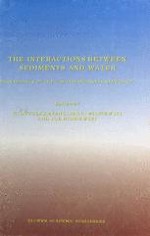1997 | OriginalPaper | Buchkapitel
The Freshwater Floc: A Functional Relationship of Water and Organic and Inorganic Floc Constituents Affecting Suspended Sediment Properties
verfasst von : I. G. Droppo, G. G. Leppard, D. T. Flannigan, S. N. Liss
Erschienen in: The Interactions Between Sediments and Water
Verlag: Springer Netherlands
Enthalten in: Professional Book Archive
Aktivieren Sie unsere intelligente Suche, um passende Fachinhalte oder Patente zu finden.
Wählen Sie Textabschnitte aus um mit Künstlicher Intelligenz passenden Patente zu finden. powered by
Markieren Sie Textabschnitte, um KI-gestützt weitere passende Inhalte zu finden. powered by
Flocculated fine-grained sediment is a complex matrix of microbial communities and organic (detritus, cellular debris and extracellular polymers) and inorganic material. Suspended flocs within any aquatic system play a significant ecological role as they can regulate the overall water quality through their physical, chemical and/or biological activity. This paper investigates the complex structural matrix of riverine flocs over a large range of magnifications using correlative microscopic techniques. The significance of floc structural characteristics [(size, shape, porosity, density, inorganic composition, organic composition (bacteria and fibrils)] on the physical (eg. transport and settling), chemical (eg. adsorbing/transforming contaminants and nutrients), and biological (eg. biotransformation and habitat development) behaviour of a floc is investigated. Results suggest that it is the floe’s internal structure that has a significant impact on controlling the above floc behaviours. This internalstructure is complex and is often dominated by the existence of a three-dimensional matrix of fibrillar material secreted by the active microbial community within the floc. This matrix, in conjunction with the inorganic and bioorganic (active and inactive) constituents of a floc, provides an intricate pore structure that may result in water being an important bound component of a floc. These complex interactive structural and functional properties of a floe are considered to influence a floe’s behaviour both physically in how it is transported or settled, chemically in how it adsorbs/transforms contaminants and nutrients, and biologically in how it develops a diverse microhabitat capable of modifying the structural, chemical and biological makeup of the floc.
